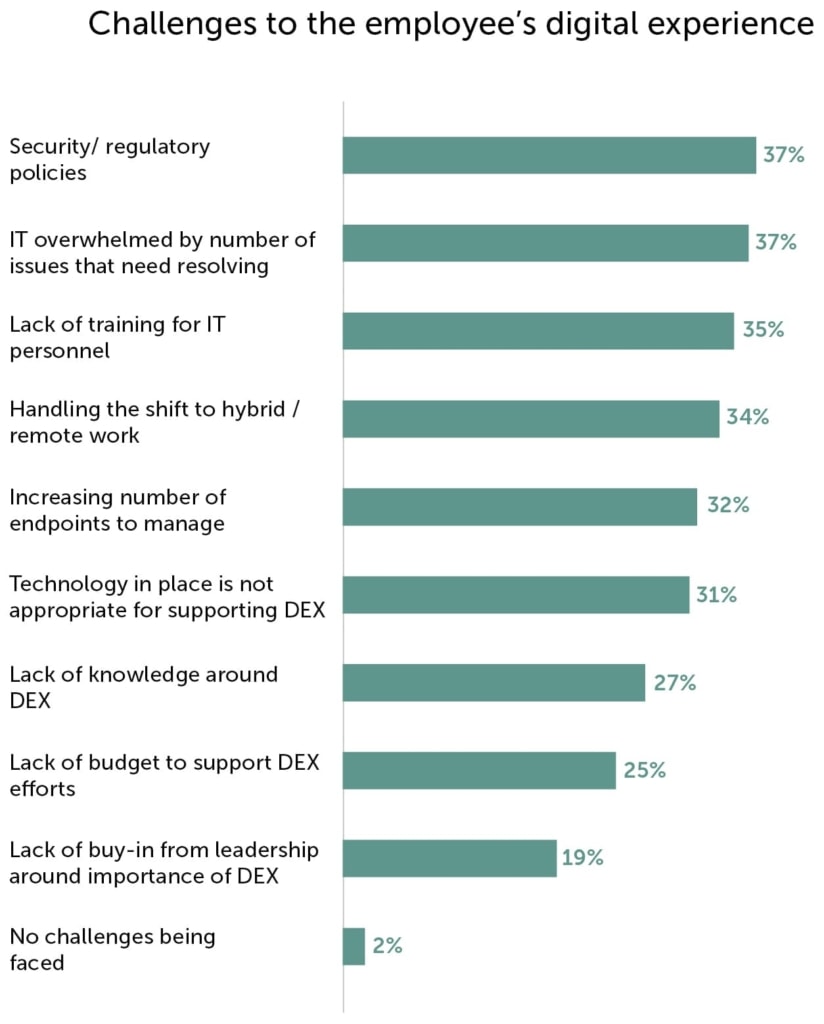In my role as Director of Customer Success with Intelocate, I help our customers set up their workspaces in a way that best reflects their organizational structure. Oftentimes, this means I have the opportunity to identify potential issues in existing processes, and provide potential solutions that can benefit overall productivity.
Nowhere is this more true than in the case of issue reporting and resolution.
While browsing the web this week, I happened upon this article from VentureBeat. If you’re the type that’s inclined to read the title of an article and decide that it’s not for you, I strongly recommend spending the time to have a read through this one! Essentially it touches upon a number of things that are incredibly important for all businesses, and the likelihood is that you’ve experienced at least some of the issues outlined in the following graph.

While the article itself focuses on the results of a survey of IT professionals, the actual data goes a lot deeper.
Efficiency starts with effective processes
It highlights the importance of having adequate processes in place to ensure that time isn’t being wasted needlessly on both sides of the ticketing experience: those providing the support/resolutions, and those reporting the issues.
This is far from just an IT issue. It’s an organization-wide problem that forward thinking companies need to tackle head on in order to increase the overall efficiency and effectiveness of staff across the board.
Identifying the bottlenecks
This area often creates major bottlenecks in organizational workflows, slowing down projects, reducing frontline staff’s ability to carry out their primary duties and, in the worst cases, creating a culture where issues simply aren’t reported until they’re bordering on disastrous, due to the convoluted nature of getting tickets resolved.
Here are some of the most common issues I’ve run into:
- Staff are required to call a help desk to report an issue, and are frequently faced with long hold times, repeating the same information over and over again, or being passed around to different departments
- Staff submit tickets to what they assume is the correct person, only to receive an email several hours (or days) later informing them that they need to contact someone else
- Issues are successfully reported, but staff have no way of tracking progress, often to the point where it seems like the issue is being ignored, or has been missed entirely
- The act of reporting ad issue simply takes too long, removing the staff member from their primary tasks, causing them to fail on KPIs
As you can see, there’s a basic pattern to these problems…
Reporting issues is often so time consuming or frustrating that staff simply don’t want to do it.
This puts the organization in an extremely dangerous position.

Lack of issue reports doesn’t mean lack of issues
While at face value it might seem that, due to the lack of issue reports, everything is running smoothly, this is almost never the case. Instead, issues may be running rampant, but are not being escalated, and therefore run the risk of becoming much more serious issues in future.
Your head office is only as strong as the information it receives from its departments and locations. If that data is incomplete, poor decisions are much more likely to be taken.
And then there’s the other side of the issue reporting process: issue resolution. As anyone who has worked in a support or help desk role can attest, there’s huge repetition in the role.
Running through the same troubleshooting script over and over again is tiresome, frustrating, and morale draining. There are only so many times in a day you can ask if the user has tried “turning it off and back on again”, after all.

By that same note, there are equally frustrating moments to be had when issue reports amount to little more than “my computer is broken”… as if that provides anything close to the level of detail required to solve the problem!
Issue reporting should be easy, and effective
So what are the options? How do we fix the real problems here: reducing time taken to report issues, ensuring that the necessary information is provided within the initial report, and attempting to make resolution as efficient as possible?
For my money, it all starts by having the right workflow in place within your ticketing / helpdesk / issue reporting system. Expecting staff to pick up a phone to call in a ticket just doesn’t cut it in 2022. We need to be empowering them to focus on their primary roles, not stand around listening to hold music in the hope they will be connected to the right person. That’s an antiquated approach that makes no sense in modern business.

Identifying a process that makes sense
With an online, cloud-based platform, your staff can simply log in via their phone, tablet, or computer, select the issue department, category (if it’s an IT issue, is it, for example, a network problem, a computer problem, or a printer problem?), and perhaps sub-category (if relevant).
From here, they could be presented with a number of interactive options – pre-emptive ticket resolution attempts, if you will – such as troubleshooting guides relating to the category they have chosen. In many cases, running through these troubleshooting steps can resolve the issue instantly, without tying up an additional staff member, and ultimately reducing load on your support teams.
In cases where a troubleshooting guide isn’t sufficient, additional information can be requested that’ll help support staff get straight to the root of the problem without asking the same questions over and over again. And the best part of this kind of solution? All that information is saved with the issue report should it need to be escalated to an external vendor, or another member of the department. If more specific information, such as a photo or video of the problem, is required, having the ability to request it from the staff member who reported it, all while retaining the information within the ticket, makes things even more efficient.
Most importantly, in my opinion at least, is that once the issue has been reported, its progress through to resolution should be fully transparent. The staff member who reported the issue should be able to track it through to completion. Knowing that issue reports are being treated seriously really does make a huge difference to the way your team members view the workplace. Everyone wants to know they’re being heard, and this is a great way to reinforce that.

Everyone reaps the benefits
Nobody likes wasting time, and no business likes forcing their employees to lose productivity due to inefficiencies in their processes. Issue reporting needs to be a seamless process, and one that yields visible results across the entire organization. The more confident your staff are that issues are being dealt with, the more likely they are to continue to report them – and that benefits everyone






